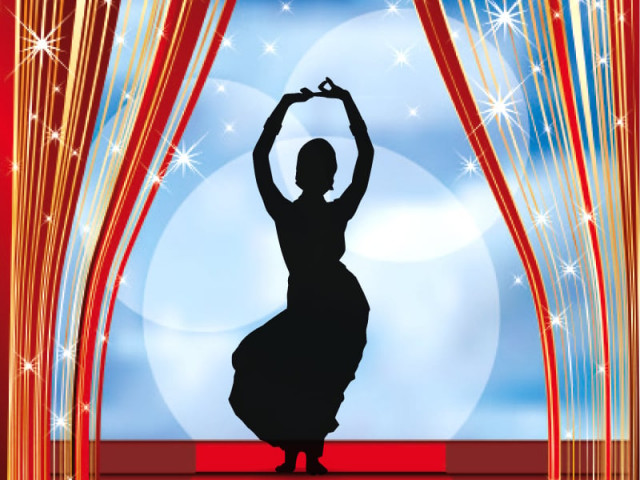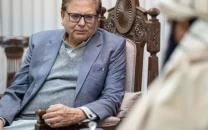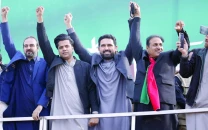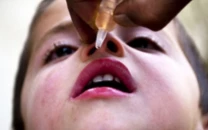Dunya — a film featuring khwaja siras
For a change, Shafqat Cheema will be playing a positive character in this film.

Dunya — a film featuring khwaja siras
The media’s portrayal of khwaja siras (transgender individuals) is often negative. In the film industry, such a character is either the subject of a joke or frowned upon and given limited roles.
In Shoaib Mansoor’s Bol, we saw the transgender community play a more positive role as its members tried to save a young boy from the clutches of harassers. In the same spirit, this coming February these neglected individuals of our society will play a role in Dunya, a Punjabi film directed by the distinguished Shahid Rana, who is making a comeback after five years.
Near the acclaimed Evernew Studios in Lahore, a rooftop marriage hall is festooned with lights. Dhol and dafli players are all set to film a scene capturing an old-city haveli. Around 20 khwaja siras are dressed in their best outfits; their eyes shining with excitement as they prepare for their film debut. Starring alongside are some of Lollywood’s finest actors; Moammar Rana, Saima, Shafqat Cheema, Rambo, and Nargis. It’s the shooting of the film Dunya, in which 70 members of the transgender community will act alongside the film industry’s prominent stars.
Neeli Roy, the guru and chairperson of Anjuman Khwaja Sira, is from Texali gate in old Lahore. Over the years, she has taken in and trained many people from the transgender community and suggested some names for the shooting of the film. Roy wants to show the societal discrimination against khwaja siras like herself by appearing in the film. “People look at us differently — with really bad intentions,” she says. “It would be great if the awaam will love us [because of this film]; we are sad people and have been kicked out of our houses. All we need is love.”
One member from the community, Zebi, stands close to her group of friends at the shooting. Her face is lit up and she giggles as she waits for her scene to be filmed. Zebi is from Badami Bagh and lives with her teacher, Roy, most of the time. “Most of us have to run away,” she explains. “If I ask you to wear these hijra clothes, would you? Even if you wear them, would your family accept you? They would not!” Zebi cries out. “That’s why we stay away from our families and our neighbourhoods, because we cause them embarrassment.”
An underlying theme in the film is the dancing culture associated with khwaja siras. Roy laughs as she tries to dispel the stereotypes that come along with living in prostitution-associated neighborhoods like Heera Mandi.
“It’s known as Heera Mandi because that’s where the singing and dancing takes place,” says Roy. “If it’s a wedding or the celebration of a child’s birth, people want to have a function and call khwaja siras. At that time, people book us for their functions and go home,” she says bitterly.
With this film, for the first time, Pakistan’s favourite villain Shafqat Cheema will be playing a positive role in a Punjabi film — the role of a guru Khwaja Sira. In the movie, Moammar Rana works as a doctor in a village where he meets Saima. Rambo, who plays Saima’s brother, is the sole-breadwinner for their family. When his sister is ready for marriage, he leaves the village for the city to earn money for her dowry. His struggle begins when he arrives in the city and his horse is stolen outside of Data Sahib’s durbar.
“In the film, Rambo dances to make money for Saima’s dowry, but the result is that no one is willing to marry his sister,” says veteran screenwriter and lyricist Abdullah Chilli, who has penned the script for Dunya. “These traditions have a negative role, and it’s important that we rethink them.”
A series of mishaps lands Rambo behind bars, where Shafqat Cheema introduces him to the world of dancing in Heera Mandi and also plays the role of a mentor who gets Rambo on his feet.
Although it seems that Dunya is going to be a film that touches upon some serious themes, Rana clarifies that it will still be entertaining. “I have never really done a film like this before. Our action films are failing so we are hoping to do something light-hearted and comedic,” he says.
Published in The Express Tribune, October 12th, 2012.
Like Life & Style on Facebook and follow at @ETLifeandStyle for the latest in fashion, gossip, entertainment



















COMMENTS
Comments are moderated and generally will be posted if they are on-topic and not abusive.
For more information, please see our Comments FAQ